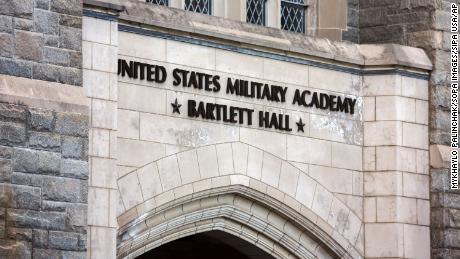The Navy saw a 9.2% increase in sexual assault reports, while the Air Force and Marines each saw an increase of about 2%.
In total, the military received 8,866 sexual assault reports in fiscal year 2021, the data shows. The previous year, the army had received 7,916 such reports.
The fiscal year covered by the report was October 1, 2020 to September 30, 2021, and the rates of increase compare fiscal year 2020 statistics to fiscal year 2021 statistics.
Dealing with the problem a top priority
Briefing on the report, Department of Defense officials said the U.S. military needs to move from raising awareness of the problems of assaults within the military and among services to doing a better job of preventing them.
The total number includes reports of sexual assaults committed by members of the military during their military service, reports of members of the military before their military service, and reports made by civilians or foreign nationals against members of the military.
Meanwhile, a confidential survey conducted by the military estimated that approximately 35,900 active duty service members reported experiencing some form of unwanted sexual contact in 2021. Of those 35,900, 19,300 women and 16,600 men reported experiencing unwanted sexual contact.
However, this survey, conducted by the military every two years and used to estimate the broader prevalence of sexual harassment and sexual assault, also includes such cases that occurred before a member joined the military or were committed by a person outside the military.
These results show a “significant increase in the prevalence of sexual assault” in the military, Foster said.
“The results are a tragic reminder of the challenges we face and the absolute need for continued commitment from leaders, historic reforms that remain underway and a focus on the latest in prevention so that we can achieve the fundamental change we need,” Foster said.
The prevalence rate, where military service members noted whether they had had unwanted sexual touching, indicates the “highest sexual assault prevalence rate since the department began measuring assault prevalence.” sex in 2006″ for women and the “second highest prevalence rate for men,” Foster said.
The results of the 2021 survey “cannot be scientifically compared to results from previous years” due to a “government-led change in the measurement of sexual assault”, the Department of Defense said in statements supporting documents for the report. Because the survey questions were changed, an “apples to apples” comparison cannot be made, said Dr. Ashlea Klahr, director of the Department of Defense Health and Resilience Research , Office of People Analytics, during the Thursday briefing.
When reporting unwanted sexual contact, women “overwhelmingly identified their alleged abusers as men,” with 91% of women saying the unwanted contact came from men. Less than half of men identified their alleged attackers as male, at 46%, and a third of men reporting unwanted sexual touching identified their attackers as female, according to the report.
The majority of incidents of unwanted sexual touching “involved someone from work and often a friend or acquaintance,” the report said. About 9% of women and 10% of men who reported this type of contact said “at least one suspected abuser was an intimate partner,” according to the report.
The report on the increase in sexual assaults is a blow for the army, which is already struggling to meet its recruiting targets. In a July memo, Secretary of the Army Christine Wormuth and Chief of Staff General James McConville acknowledged that the service could be as low as 445,000 troops by the end of next year, which is well below the target of over 460,000.
Pentagon implements recommendations to reduce attacks
After Austin appointed an independent review panel to provide the department with recommendations on how to fix the problem, the Pentagon outlined a plan to adopt all of the panel’s 80 recommendations in September 2021.
Defense Department officials said the report’s findings serve as a reminder that the changes recommended by the commission and changes to this year’s National Defense Authorization Act are imperative to seeing real change within the army on this issue.
“We have heard loud and clear from our victims that the conditions in the force are unacceptable at this time,” a Defense Ministry official said Thursday. “That’s why we’re making unprecedented investments in resources to address this issue.”
In this year’s National Defense Authorization Act, Congress formally removed the handling of sexual assault cases from the military chain of command, a move long sought by critics of the military’s approach to such investigations. . Military commanders must now forward complaints of sexual harassment to independent investigators.
Dr Andra Tharp, senior prevention adviser in the Office of Force Resilience at the Ministry of Defence, said the ministry was moving from an awareness-based prevention approach to a more action-based prevention method by establishing new policies and procedures through the commission’s recommendations and changes to the NDAA.
“When we talk about prevention, we are referring to stopping a violent act before it happens, either by increasing the conditions or factors that prevent that violence from happening, or by decreasing the conditions or factors that increase the risk of violence occurring,” Thrap said. “It’s different from the awareness-based prevention that has been part of the department’s advocacy work for two decades.”

